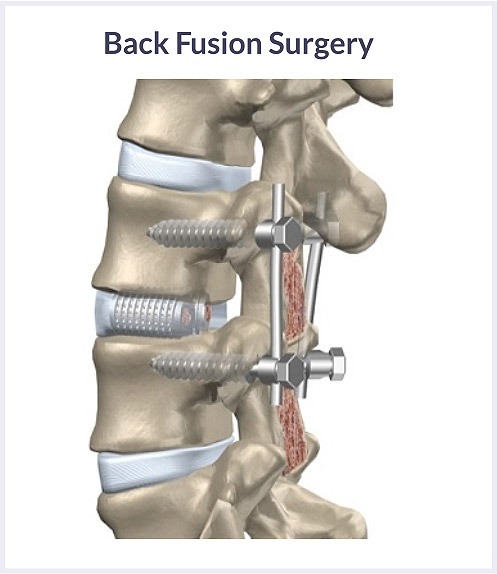Back Pain Treatment Home » Conditions Treated » Failed Back Surgery
Failed Back Surgery Syndrome (FBSS)
Failed Back Surgery
The biggest problem with spine surgery is its low success and high failure rates. The chances of failure are so high that researchers have now labeled this as a separate entity called ‘Failed Back Surgery Syndrome’ (FBSS).
Spinal Fusion surgery today is similar to when it was first done by Dr. Fritz Lange in 1909. The failure rate of back fusion surgery can be as high as 50 percent. More than 30 percent of spinal fusion patients report back pain within 12 months following the surgery. Furthermore, a staggering majority of spinal fusion patients report that post surgery, they still require strong pain medication to manage their chronic pain.
Up to 36% of discectomy patients report significant back and leg pain 2 yrs post discectomy and to 30% of laminectomy patients report no change or increased pain 12 months after surgery.
There are several regenerative treatments available for failed back surgery. The aim of the regenerative medicine procedures are to use your own body’s natural healing to slow down, suppress and even reverse damaging inflammatory processes and generate new tissue to repair injury. This can lead to symptom relief and recovery of the damaged area of the spine.

Regenerative Medicine Procedures
For Failed Back Surgery
Intradiscal PLATELET RICH PLASMA
Platelet rich plasma therapy (PRP) is the re-administration of your own platelets to into your intervertebral discs to activate the body’s natural healing cascade for repair and regeneration.
PRP has been successfully used for the management of several musculoskeletal conditions such as ligamentous tear, joint inflammatory disorders, torn tendons and muscular problems. Platelet Rich Plasma is prepared by centrifuging a small amount of a patient’s blood to obtain a platelet-rich sample. The platelets are activated and then injected under X-ray guidance into your intravertebral disc. This may be combined with The Discseel® Procedure which seals disc tears (see below.)
Intradiscal Bone Marrow Aspirate
Intradiscal Bone Marrow Aspirate in the injection of your bone marrow aspirate into your intervertebral discs. Your bone marrow contains certain types of regenerative cells. All of your body organs or structures are made of countless cells.
As part of a cell-based treatment, regenerative cells can be collected from bone marrow and blood with minimal discomfort. These cells can then be processed in a state-of-the-art laboratory utilizing the latest technology. Finally, the regenerative cells, in combination with natural growth and healing factors, can be injected where they are needed – such as into a intervertebral disc. This may be combined with The Discseel® Procedure which seals disc tears (see below.)
The discseel® procedure:
Tears in the our rim of your intevertebral disc (called the annulus fibrosus) can be the cause of your ongoing back pain after surgery.
The Discseel® Procedure is a revolutionary procedure using an FDA approved biologic to repair your damaged spinal discs.
It is a minimally invasive procedure that injects an FDA approved biologic into intervertebral discs. This is able to repair and seal damaged spinal discs, even after spinal fusions and can be combined with Bone Marrow Aspirate to further promote healing.
The Discseel® Procedure has been successful in permanently relieving chronic back pain for over 62% of patients that previously had a failed spinal procedure, including spinal fusions.


